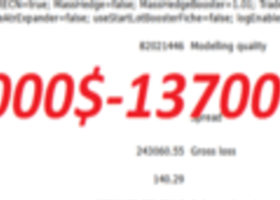There is no trade call for the session. Last week saw downside in the USD without any fundamental catalyst, and upside in AUD and GBP. Today’s session is light and provides opportunity to analyse potential market moves for the week. As always on Mondays, prepare for the upcoming week by reading my currency update below.
Currency Update:
USD: Headline NFP for February beat estimates at 242k vs 190k expected; the solid beat was undermined by a miss on Average Hourly Earnings which declined -0.1%. vs a rise of 0.2%. The USD remains the strongest currency fundamentally. Core PCE for January ticked up to 1.7% y/y which is reassuring for the Fed’s tightening policy. We may see some hawkish comments from Fed members in relation to the recent move higher in underlying inflation. The second reading of Q4 GDP beat estimates at 1.0% above 0.4% expected. CPI for January beat estimates with Core CPI y/y ticking up to 2.2% and rising 0.3% for the month. Headline CPI was at 1.4% y/y. Minutes from the January meeting struck a cautious tone, noting increased uncertainty regarding inflation and potential financial risks. NFP for Jan saw 151,000 jobs added, versus expectations for 190,000. The unemployment rate fell to 4.9%. Average hourly earnings jumped 0.5% for the month, however the y/y figure held steady at 2.5%.
EUR: Eurozone Flash CPI for February missed estimates at -0.2% versus expectations of flat for the headline; 0.8% versus expectations of 0.9% for the ex-food & energy; and 0.7% versus expectations of 0.9% for the core (ex food/energy/alcohol/tobacco). This increases chances that the ECB will make a substantial move in monetary policy at the March meeting. At the January 21 ECB meeting, Draghi made dovish comments, saying that monetary policy will be reviewed at the March meeting due to further deterioration in inflation expectations and other financial uncertainty.
GBP: UK GDP second estimate for Q4 2015, came inline with expectations for both the q/q at 0.5% and the y/y at 1.9%. London Mayor Boris Johnson’s announcement to campaign for leaving the EU has put extra bearish sentiment on sterling. Average Earnings were at 1.9% for December, while the jobless rate moved up to 5.1%. Core CPI for January missed estimates and dipped back to 1.2%. The Bank of England vote split changed back to 9-0 with McCafferty no longer voting for a hike. Growth forecasts for 2016 and 2017 were downgraded while inflation is expected to remain below 1% til the end of the year. The referendum regarding Britain’s exit from the EU contributes to bearish sentiment on the currency due to political uncertainty.
AUD: Q4 GDP was much better than expected at 0.6% q/q vs 0.4% expected, and 3.0% y/y vs 2.5% expected. This positive reading brings into doubt the chances of any RBA cuts during 2016. The March 1 RBA statement was largely a reiteration of the prior statement; low inflation would provide room for easing; reasonable prospects for growth in the economy and low rates are supporting demand; will make a decision on whether market turmoil portends weaker demand. Q4 Private Capex beat estimates however forward-looking estimates for 2016/17 dramatically missed prior estimates, which caused weakness in the Aussie. 7,900 jobs were lost in January while the Unemployment Rate ticked up to 6%. CPI for the fourth quarter beat expectations overall with Trimmed Mean y/y remaining at 2.1%, which is within the Banks’s target of 2-3%. The Australian dollar remains a neutral currency which will be guided by direction in key commodity assets.
NZD: RBNZ Inflation Expectations for Q4 2015 came in at a 22-year low at 1.6%which puts pressure on the Bank to ease further. The RBNZ kept rates on hold in January but struck a dovish tone saying that the NZD needs to move lower and further easing is a possibility. Westpac forecast a cut to 2.25% at the March meeting. CPI for Q4 was poor showing deflation of -0.5% for the 3-month period and a rise of only 0.1% throughout all of 2015. This increases chances of further RBNZ cuts. On February 3, the Quarterly Employment Change printed at 0.9% versus the 0.8% consensus, while the Unemployment Rate tumbled to 5.3% smashing expectations of a 0.1% rise to 6.1%, and the lowest since the first quarter of 2009.
CAD: Canada’s economy expanded at an annualised rate of 0.8% in Q4, beating estimates; GDP for 2015 was at 1.2%. January employment declined 5,700 – its second decrease in the last three months, and missing consensus of a 6,000 gain. The jobless rate ticked up to 7.2%, on par with its highest mark since March 2013. The severe depreciation of the CAD due to falls in oil means there is less urgency to cut rates, as the lower CAD will boost inflation by making CAD-denominated goods more attractive to overseas buyers.
JPY: BOJ core CPI dropped to 1.1% y/y for January. GDP for Q4 2015 missed estimates at -0.4%. The Bank of Japan announced negative interest rates of -0.10% on January 29 but left the QQE program unchanged. The inflation target was pushed back to end 2017 and the Bank remains prepared to ease further if necessary. The BOJ are watching CPI excluding food & energy to gauge underlying inflation trend.
CHF: Q4 GDP beat estimates at 0.4%. The franc is fundamentally a weak currency given the SNB’s negative interest rates, however it can suddenly rally on safe-haven flows. The SNB regularly recite that the franc is overvalued and they are prepared to intervene to weaken the currency. The franc’s direction is difficult to predict due to regular intervention by the SNB.



